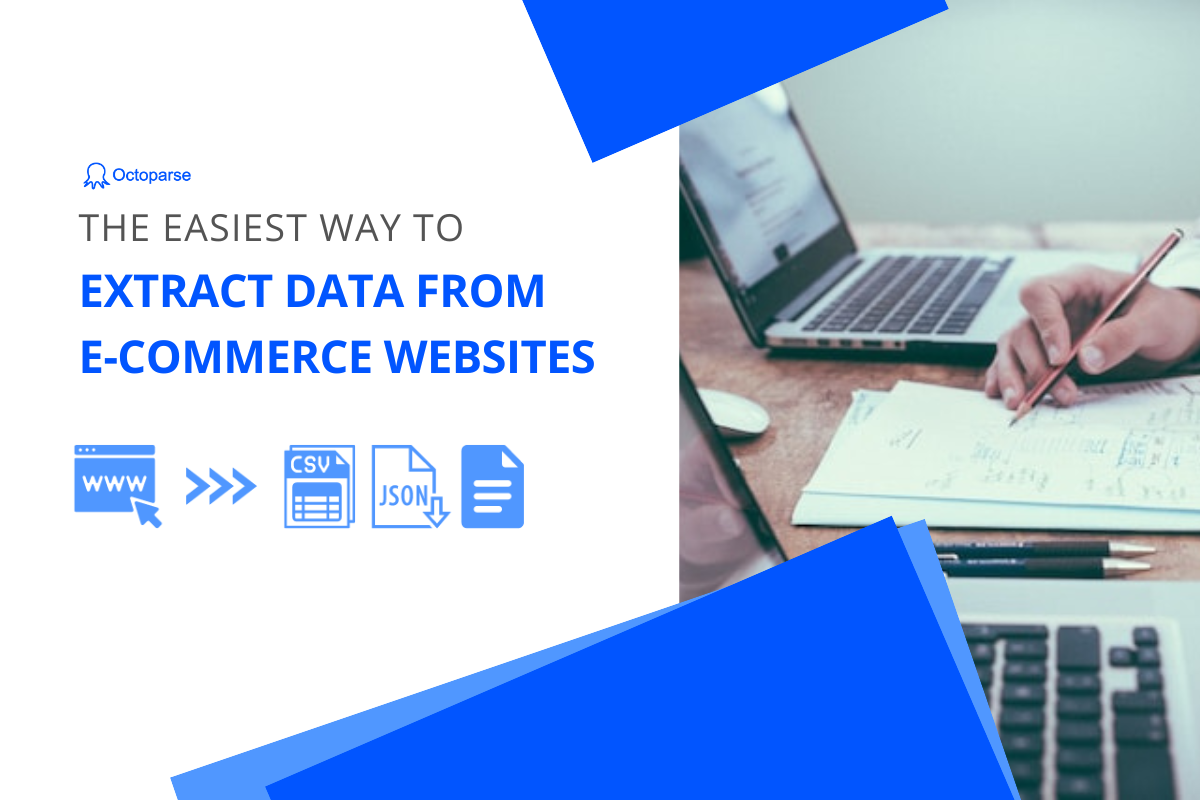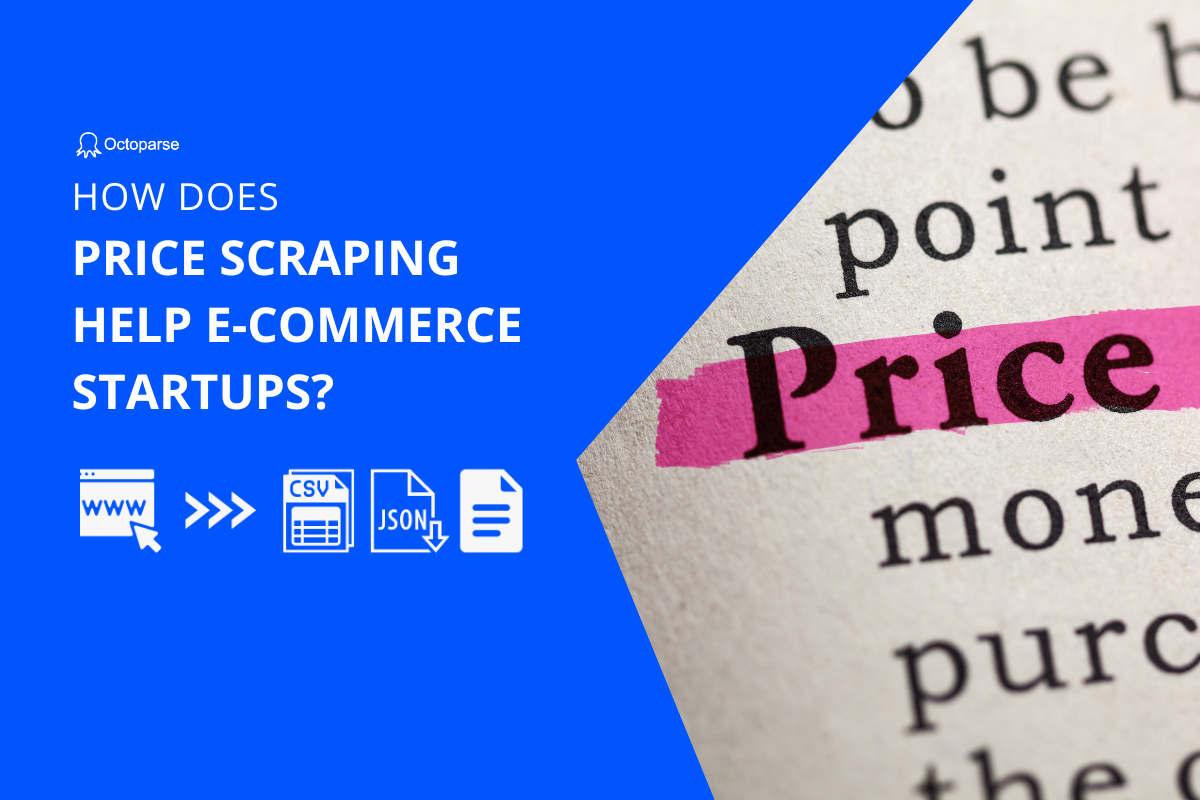“E-commerce” has been a buzzword for years with the rapid growth of the industry. Almost every businessperson is eager to establish his or her online business and enhance brand awareness with the help of e-commerce websites. The increase in the number of e-commerce platforms made these websites great sources of abundant product information and led to the e-commerce sellers’ demand in gathering data to gain an edge. In this article, we will introduce how to extract data from e-commerce websites with the help of the web scraping technique.
What Is Data Extraction and Why Is It Important?
Data extraction is the process of collecting or retrieving disparate types of data from a variety of sources, many of which may be poorly organized or completely unstructured. The process of data extraction is normally done with the help of tools and software programmed to access all activities of the website and user through the web browser, which makes it possible to consolidate, process, and refine data so that it can be stored in a centralized location in order to be transformed.
The demand for extracting data from e-commerce websites is growing with the boost of online shopping. The data contained on e-commerce sites include detailed information about a product, deals, sales, quality, material, price, stock availability, and much more.
For e-commerce sellers, managing an e-commerce business is not merely about creating an online store on the e-commerce website. It is necessary to keep an eye on the ongoing activities and consistently put efforts to follow the trends, update inventory timely, fix the technical issues, manage campaigns, do social media marketing, manage brand reputation, etc. Therefore, extracting data from e-commerce websites plays an important role in guiding both current e-commerce sellers and potential sellers to get actionable insights into the business.
How Does Data Extraction Help the Development of E-Commerce?
Data is a crucial part of e-commerce businesses. After gathering massive amounts of data, companies can use the data gained to make informed purchases, do market research, and analyze competitors.
Price Monitoring and Competitors Research
For e-commerce website owners, it’s really necessary to track and monitor the prices of what your competitors are selling their products at. The sellers with amounts of product pricing data can develop their pricing policy better than their competitors, which is known as price optimization. After knowing different prices for the same products well, the e-commerce business owners will be able to decide their final offering price.
Price monitoring helps e-commerce sellers boost their profits that the pricing data collected from competitors can be regarded as great equipment for the e-commerce wars which may happen in the future. Also, it is always beneficial to keep track of the real-time prices for an optimal price assessment.
Lead Generation and Analysis of Market Trends
The growth of a business depends upon an effective marketing strategy. With more knowledge collected from customers through different touchpoints like loyalty programs, visitor browsing patterns, and past purchase behavior, e-commerce businesses will process this information to carry out client segmentation and so push out personalized content and promotions. In this way, lead generation can be triggered.
It is an innovation age and E-commerce markets are also changing very rapidly. E-commerce business owners require a huge amount of data to analyze and predict market trends. Predictive analysis helps E-commerce merchants to know what customers want and how much they are ready to pay for it.
A relatively accurate profile is often created for each customer after collecting and processing data. This customer profile can thus provide insights as to what price would re-engage the customer and persuade him or her to make another purchase. Note that this is proven to be the most effective for customer retention methods. This may also help expedite the process of deciding whether or not a $10 off or 20% discount would work the best for any specific customer.
Having limitless data that can give exposure to market predictions is helpful for all e-commerce sellers. They can use historical data to predict future trends and leverage a huge competitive advantage to maximize sales.
Extract Data from E-Commerce Sites
To extract data from e-commerce websites, you can either do it manually, or write your scrapers, or use no-code tools to click once and scrape millions of times. Now, let’s discuss these 3 approaches to building your e-commerce data scraper.
Earlier when brick and mortar used to be the only retail channel, manually updating the data was kind of effective but now the information changes at every second. Manual scraping is not the option for extracting large amounts of data. This method means that you have to open each web page, copy the data you need, and paste it in an excel sheet or some other database. It is a sure-shot approach to eat on your profits and fail.
Writing your own scrapers requires you to have a programming background in any of the major programming languages like Javascript, Python, Java, PHP, etc. If you don’t know how to code, or lack the time & money required to write and set up your scraper, this method is definitely not your best choice. Also, self-built scrapers need to be maintained in the process of using. It can be time-consuming to do so.
To extract data from e-commerce websites in a most efficient way, you ought to select the third way, which is to take advantage of web scraping tools like Octoparse. Octoparse is a free and powerful eCommerce data scraping tool with a user-friendly point-and-click interface. Both Windows and Mac users will find it easy-to-use for extracting almost all kinds of data you need from a website. With its brand new auto-detect algorithm, users with/without coding knowledge are able to extract tons of data within seconds.
Check out the video below to see how to build a scraper from scratch and extract information from Amazon. For step-by-step tutorial, please find it here.
Besides, Octoparse provides over 50 pre-built web scraping templates for all users, covering big e-commerce websites such as Amazon, eBay, Etsy, Walmart, etc. All you need to do is to enter the keywords and URL, then wait for the data results. In addition, it provides a free version for all people. For premium users, they can use features such as crawler scheduling and cloud extraction to make the process less time-consuming.
Data is a big treasure for all e-commerce business owners. All they need to do is to dive in and easily automate the whole process with the help of E-commerce data scraping. Don’t miss the chance to try Octoparse to get incredibly valuable insights into the business and maximize customer engagement!
(Updated 2022)




